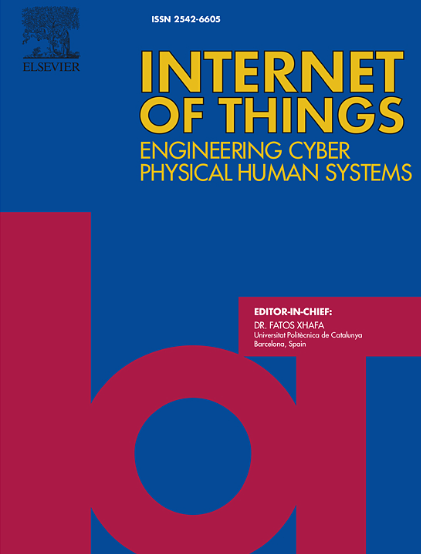A lightweight hybrid approach for intrusion detection systems using a chi-square feature selection approach in IoT
IF 7.6
3区 计算机科学
Q1 COMPUTER SCIENCE, INFORMATION SYSTEMS
引用次数: 0
Abstract
Protecting IoT networks from cyber threats is challenging, especially with resource-constrained devices. This paper proposes an efficient, lightweight hybrid intrusion detection system (IDS) specifically optimized for IoT devices. Our innovative approach integrates convolutional neural networks (CNN) for effective spatial feature extraction and bidirectional long short-term memory (BiLSTM) networks for capturing temporal dependencies. Crucially, we employ a chi-square () feature selection method, significantly reducing input complexity by selecting the 20 most relevant features from the UNSW-NB15 dataset. Benchmarking against recent IDS methods, our model achieved outstanding accuracy: 97.90% for binary classification and 97.09% for multiclass scenarios, clearly outperforming existing approaches. Additionally, computational performance evaluation reveals rapid prediction times (1.1 s binary; 2.10 s multiclass), demonstrating suitability for real-time IoT deployment. This study illustrates a balanced trade-off between high accuracy and low computational demand, highlighting the practical benefits of advanced, resource-efficient IDS solutions for IoT security.
物联网中使用卡方特征选择方法的入侵检测系统的轻量级混合方法
保护物联网网络免受网络威胁具有挑战性,特别是对于资源受限的设备。本文提出了一种针对物联网设备进行优化的高效、轻量级混合入侵检测系统(IDS)。我们的创新方法集成了卷积神经网络(CNN)用于有效的空间特征提取和双向长短期记忆(BiLSTM)网络用于捕获时间依赖性。至关重要的是,我们采用了卡方(χ2)特征选择方法,通过从UNSW-NB15数据集中选择20个最相关的特征,显著降低了输入复杂性。通过对最近的IDS方法进行基准测试,我们的模型取得了出色的准确率:二元分类97.90%,多类场景97.09%,明显优于现有方法。此外,计算性能评估显示快速预测时间(1.1 s二进制;2.10 s multiclass),展示了实时物联网部署的适用性。这项研究说明了高精度和低计算需求之间的平衡权衡,突出了先进的、资源高效的IDS解决方案对物联网安全的实际好处。
本文章由计算机程序翻译,如有差异,请以英文原文为准。
求助全文
约1分钟内获得全文
求助全文
来源期刊

Internet of Things
Multiple-
CiteScore
3.60
自引率
5.10%
发文量
115
审稿时长
37 days
期刊介绍:
Internet of Things; Engineering Cyber Physical Human Systems is a comprehensive journal encouraging cross collaboration between researchers, engineers and practitioners in the field of IoT & Cyber Physical Human Systems. The journal offers a unique platform to exchange scientific information on the entire breadth of technology, science, and societal applications of the IoT.
The journal will place a high priority on timely publication, and provide a home for high quality.
Furthermore, IOT is interested in publishing topical Special Issues on any aspect of IOT.
 求助内容:
求助内容: 应助结果提醒方式:
应助结果提醒方式:


